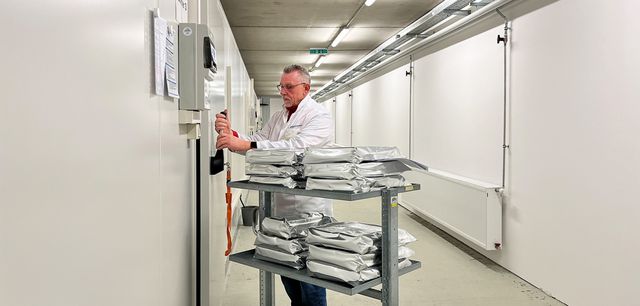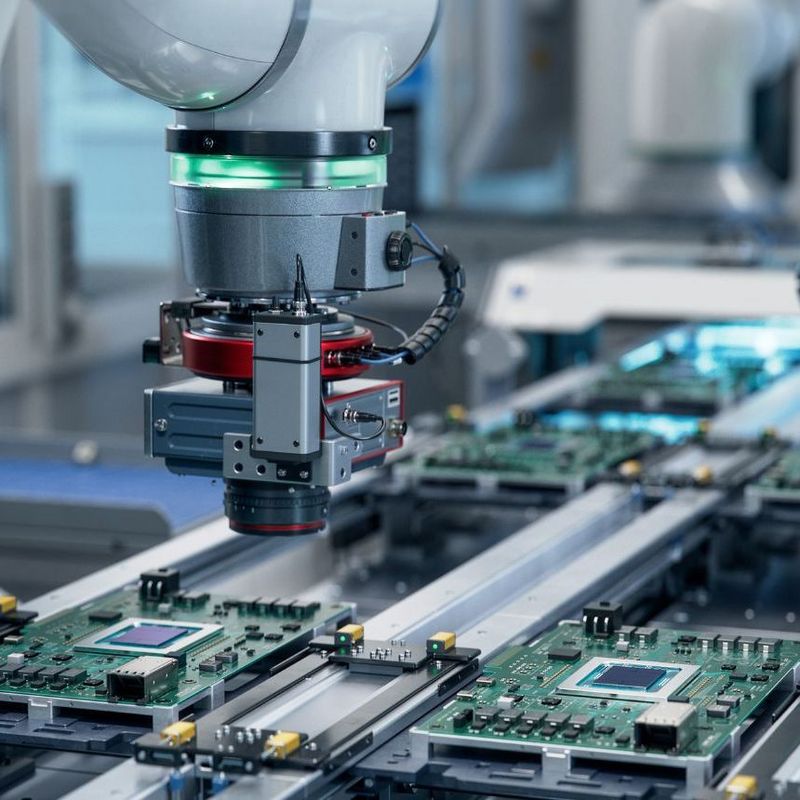14 December 2023
Semiconductor chips are the very core of all our electronic devices. If their manufacturers call a halt to production, this can result in the complete failure of expensive and long-lasting machines with losses running into the millions. Nor will just having a few semiconductors sitting on the shelf in case of emergency help either. This is because there’s one thing that semiconductors have in common with us humans: they age. We talked to Holger Krumme from the HTV Group about how this ageing process can be slowed and for which sectors the long-term storage of semiconductor chips is a matter of life and death.
#explore: Mr Krumme, it’s sometimes necessary to store semiconductor chips for a long time to ensure that they stay usable. For which sectors is this particularly relevant?
Holger Krumme: At the end of the day, this is crucial for all those sectors which use expensive machines that are designed to have a long service life, such as aviation, medical technology, the rail industry and mechanical engineering. Printing machines also cost many millions of euros and are used for 20 years or so. And having to buy a new machine just because one electronic spare part is no longer available can be the kiss of death for companies. Long-term storage is becoming increasingly important in space travel, too. With the advent of the New Space economy, new private enterprises are launching hundreds of satellites into space for all manner of purposes including smart farming, Industry 4.0 and self-driving cars. To keep the costs of these satellites down, they are often equipped with standard components which, unlike with conventional satellites, are not custom-made for them. But the problem here is that once the development of such a satellite is finished after about six years, the chip which was intended for use in it is often no longer in production. This is why chips have to be placed in storage in advance and “kept fresh” until such time as they can be installed in the satellites and launched into space.
Exactly which ageing processes are chips and electronic components exposed to?
For a long time, electronic components were stored in nitrogen to prevent oxidation and corrosion – that’s rust to you and me. But, for today’s chips, this is no longer good enough. This is because they’re made of different materials and the structures on the chips are getting ever tinier. The transistors on modern semiconductor chips are just a few nanometres long – that’s one millionth of a millimetre, microscopic in other words. And with these very delicate structures, the materials get mixed up over time. The substances inside a contact spacer diffuse to its outer part, which makes it less easy to process the chip. And these diffusion processes, as they are called, which also happen directly on the semiconductor chip, can also impact on functionality. And then you have what we call outgassing. Semiconductor chips consist of lots of chemical substances, such as solvents and plasticisers inside the plastic housing. If you put a semiconductor in airtight packaging for ten years, these substances are released in gaseous form and attach themselves to other parts of the component, which can in turn lead to corrosion and damage the chip.
So, how can we slow or even stop the chip ageing process?
We’ve developed a few methods, which are to my knowledge unique. To reduce the diffusion process, we lower the temperature. At the same time, we have to be extremely careful with our choice of storage temperature. If it’s too cold, you can end up with the “tin pest” phenomenon, which can itself destroy the components. The contaminants released from the semiconductor chips in gaseous form are captured using a special absorption method. We also expose the components to a preservative atmosphere and to gas. We call this method Thermic-Absorptive Gassing, or TAG for short. But this uses a whole lot of different recipes. With conventional storage, an electronic component can only be kept for two to three years. With our method, we can extend this to up to 50 years. The expense and hard work involved in this would of course all be in vain if a fire were to break out in the building during this time. This is why we supply the storage rooms with air with a depleted oxygen content, as you would find at an altitude of 4,000 metres. This makes it impossible for the building to catch fire: If you were to go in with a lit cigarette lighter, it would go out immediately. But our staff can work there without any problems.
About Holger Krumme:
Holger Krumme is a director at HTV and HTV Conservation. Mr Krumme, who became an electronics technician by trade after studying electrical engineering, co-developed the preservation method for semiconductor chips at the HTV site in Bensheim, Hesse.
What’s the biggest challenge in the preservation process?
No two semiconductor chips are the same. You first have to examine them minutely and tailor the storage method very precisely if you want to preserve their functionality over a really long time. And we also have to understand which ageing processes we can expect with which specific components. Our analyses always have an eye to the future. Not only that, but we don’t store just semiconductor chips but also complete components and devices, for carmakers for instance. That’s because the manufacturers have to continue to supply replacement parts for a model of car for at least seven years after the end of series production. These components consist of different chips and parts, all of which age differently. In other words, we have to consider a whole array of factors when it comes to finding the best possible storage method for the components in question. And the development of semiconductor chips never stops, which is why we put a lot of effort and money into refining our processes and adapting our methods to new requirements.




